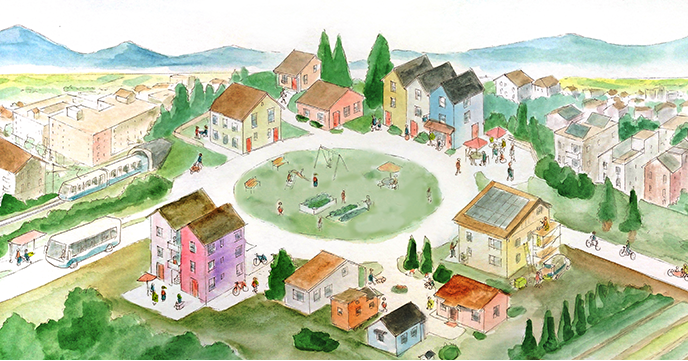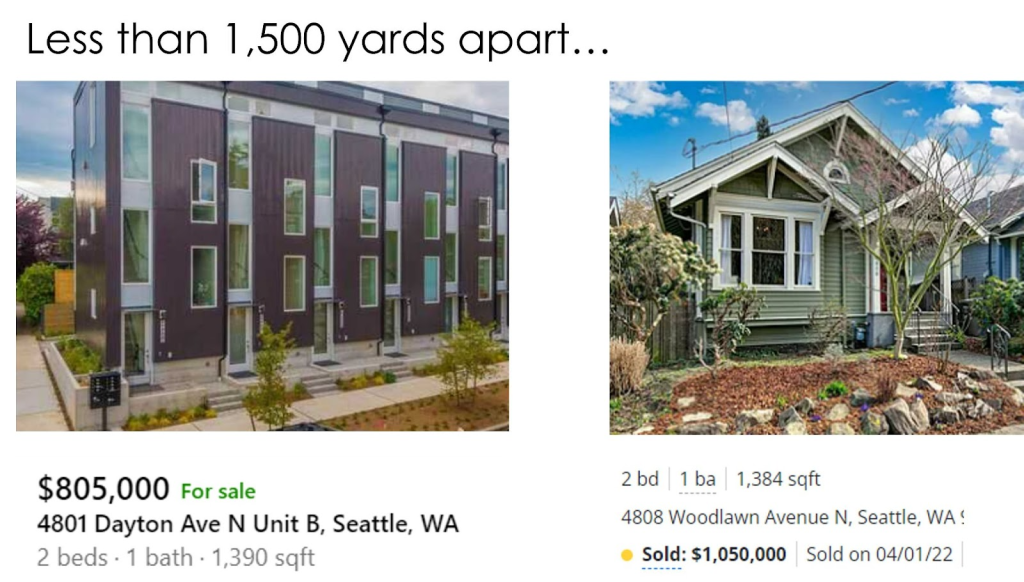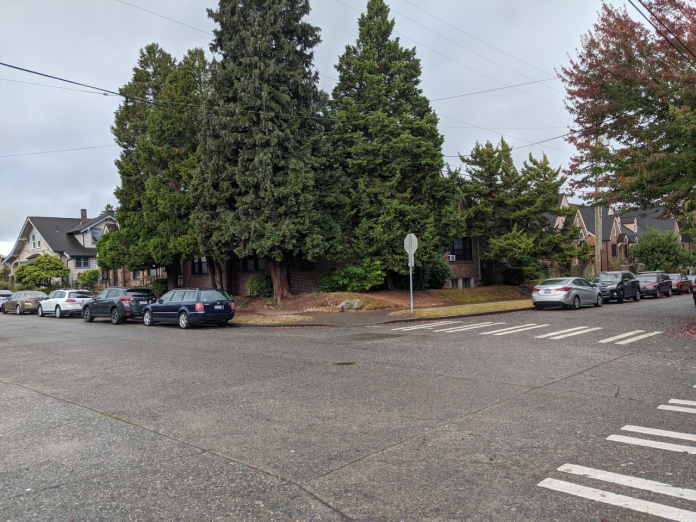
Elections have consequences – sometimes far greater than we would have initially imagined. Progressive urbanist Shaun Scott’s loss to Alex Pedersen in the last Seattle City Council District 4 election, for example, was disappointing – but just recently could have become a true disaster.
With House Bill 1110 signed into law, the state legislature has legalized up to four homes on every Seattle residential lot and sixplexes if near transit or if two affordable homes are included. Missing middle housing is legal again, but amendments to the city’s new tree protection ordinance introduced by Pedersen could have very well kneecapped any progress toward more and more affordable homes and desegregation.
In a move crass enough to provoke land use chair Dan Strauss into stating out loud that “this almost feels like a proxy for anti-density more than it is about protecting trees” Pedersen proposed a total of 17 amendments. According to one report, at its upper limit his scheme for tree protection “Pedersen’s proposal could have prohibited construction within hundreds of feet of a tree in every direction.”
Fortunately, on the one hand, Pedersen is a lame duck, and, on the other, the rest of the council had the decency and sense to reject them all. But the unfortunate reality is that we’re not out of the woods yet in District 4.
We do have an avowed progressive urbanist (who has contributed articles at The Urbanist) in the race: Ron Davis. But he’s presently opposed by Kenneth Wilson, a candidate who went so far as to double down on environmental racism (“development can also be wisely allocated to primary arterials”) on his campaign website.
Even more concerning, there are rumors that 46th District State Representative Gerry Pollet may enter the race. If so, he’d bring with him a lot of name recognition – but one thing he needs to be known far and wide for is being a key reason HB 1110 did not make it into law last session (a move that rightfully cost him a committee chair).

I’d love to persuade readers of The Urbanist to get actively involved in ensuring whoever holds the District 4 seat will be a progressive force – because history demonstrates that when that happens, we can go well beyond “dodging bullets” toward “moving the needle” in a good way.
It’s taken some time, but former city councilmember Rob Johnson proves this in spades.
Johnson was an indefatigable champion of extending upzones associated with the city’s Mandatory Housing Affordability (MHA) program into every urban village. He faced some loud (and, I would say, obnoxious) opposition along the way, including in my home neighborhood of Wallingford.) But now the jury has come in.
One of the changes was (re)legalizing townhome or rowhouse style housing in parts of Wallingford. In contrast to one “neighborhood activist’s” assertion that this would “increase, not reduce, the cost of housing” it’s opened up many more middle-class home ownership opportunities here.
According to a search on a Windermere real estate site with the area scoped to “Wallingford,” attached townhomes were on balance less expensive than single family detached houses: more than half of the former sold in the $800,000s or less, while more than half of the latter sold for $1 million or more.
Even more important, attached townhomes dominated – and expanded – the low end of the market. Sales in the $600,000s and $700,000s outnumbered detached houses nearly 10 to one (45 to 5 to be exact).
While these prices may be cold comfort to many for whom they are still out of reach, we should not understate the magnitude of Rob’s achievement here. First, this is a neighborhood in which the smallest, oldest homes on small lots can sell for more than $1 million.
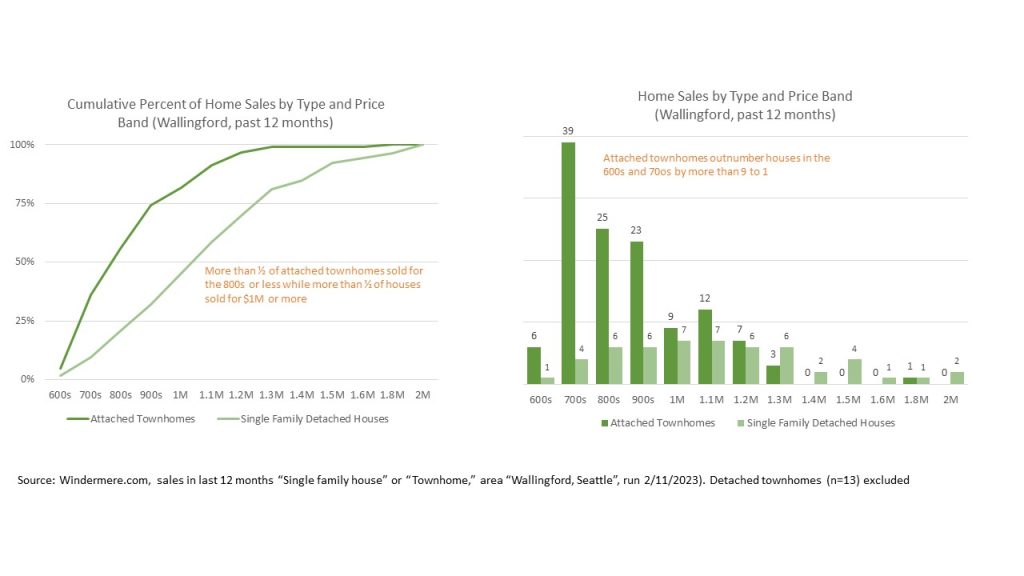
But second: While the rent is still too damn high, we are also a high-wage city. A two-earner couple of essential middle class workers can qualify for a mortgage in the $600,000s or $700,000s – but not remotely for one of $1 million or more.
Here are some examples of publicly available salaries for comparison:
- UW Professor (salary target) $81,000;
- City of Seattle Metal Fabricator (starting): $83,334;
- Seattle Public School teacher (BA+90+MA, Step 3): $83,497;
- Seattle Children’s Hospital Nurse (Step 1): $86,108;
- King County Rail Facilities Mechanic (top of day shift range) $88,658.
Any way you slice it, this is real progress. On the one hand, when older, cheaper houses are replaced by multiple townhomes on the low end, we’ve thereby increased availability at the price point the Seattle Times Editorial Board calls “starter houses.” On the other hand, more expensive townhomes may still head off what would have been construction of yet another multi-million-dollar single family occupying a whole lot, thereby allowing more people to live near jobs and transit.
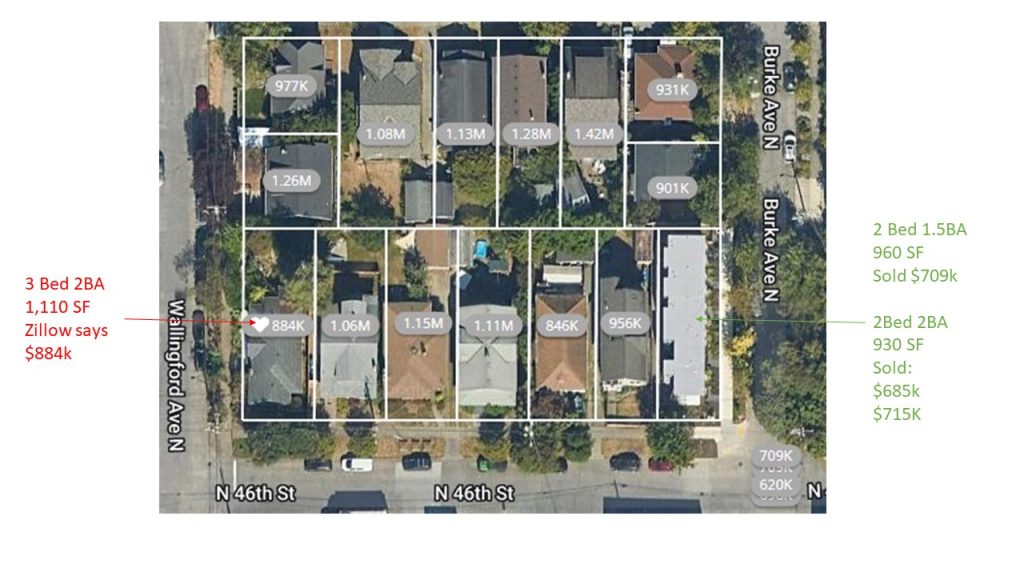
Yet the fact remains that we went from a councilmember delivering real progress to a narrowly averted disaster in our District. Right now, every sign of progressive momentum can help deter Pollet from entering the race. An obvious, massive repudiation of doubling down on the sins of the past can help ensure reactionaries decide to seek greener pastures in which to run, in perpetuity.
Let’s make this a highly consequential election for District 4 and the city as a whole.

Bryan Kirschner
Bryan Kirschner works in technology and lives in Wallingford.

